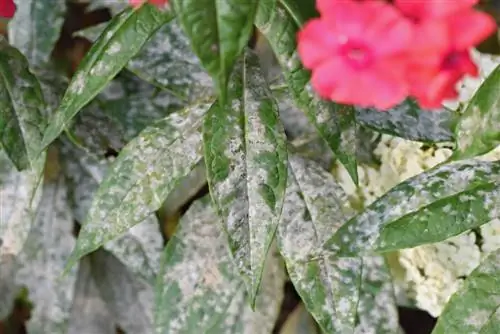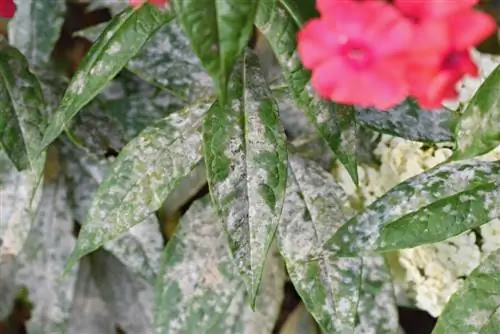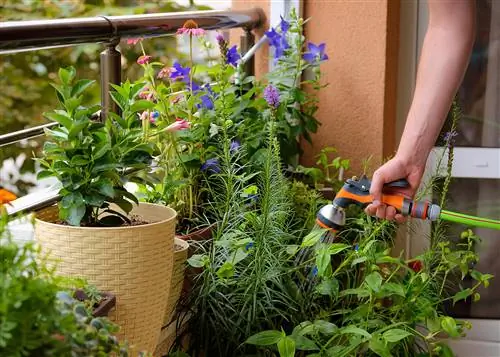- Author admin [email protected].
- Public 2023-12-16 16:46.
- Last modified 2025-01-23 11:21.
It is not without reason that people warn against putting materials contaminated with fungi or viruses on the compost heap. Not all spores or viruses are eliminated by heat. This particularly applies to the pathogens that cause powdery mildew. Plants with downy mildew, on the other hand, are harmless for compost.

Can plants with mildew be put in the compost?
Plants with downy mildew can be composted safely because the spores are sensitive to heat and are killed in the compost. Powdery mildew, on the other hand, is heat-resistant and should be disposed of with household waste to avoid infections.
Can plants with mildew be put in the compost?
The question of whether plants with mildew can be added to the compost can be answered with both yes and no. It depends on which mildew disease it is.
There is no danger with downy mildew because the spores that cause it are only pseudofungi and are not stable. They need living plants to survive. They are eliminated during rotting and by the heat in the compost.
Powdery mildew, on the other hand, is caused by spores that are very stable and can also tolerate high temperatures. Leaves and parts of plants with powdery mildew therefore belong in the household waste and not in the compost.
Difference between powdery mildew and downy mildew
It is not easy for the layperson to recognize which type of mildew an infestation is. If you want to be on the safe side, it is better to dispose of all infected plants with household waste.
A few distinguishing features:
Powdery mildew:
- white coating on top
- rare on underside
- Infestation also on fruits, flowers
- occurs especially in dry weather
Downy mildew:
- Mushroom lawn on underside
- not on top
- Topping more gray than white
- Occurs when too wet
The heat in the compost is crucial
After just a few weeks, the compost develops very high temperatures, especially in the middle - provided you have set it up correctly.
The temperatures in the hot area are up to 70 degrees. This heat kills a very large proportion of the pathogens and fungal spores found in the garden.
When composting contaminated plant material, it may make sense to check the temperatures occasionally. Then make sure that you do not transmit any diseases later by fertilizing with the compost.
Tip
If you want to compost plants with downy mildew and other viruses that are not so heat-resistant, you should move the compost pile more often. Make sure that the outer layers go into the middle. The hot rot is strongest there.






